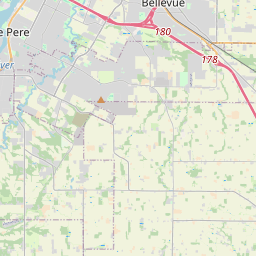Civil War and Cuban Veterans Monument
Historical marker location:






April 12, 1861: The Civil War begins with the Confederate attack on Fort Sumter, located in South Carolina's Charleston Harbor.
April 15, 1861: President Abraham Lincoln issues a call for 75,000 volunteers to serve in the Union Army to suppress the rebellion.
May 24, 1861: The first major land battle, known as the First Battle of Bull Run (or First Battle of Manassas), takes place in Virginia. It ends in Confederate victory.
September 17, 1862: The Battle of Antietam in Maryland becomes the bloodiest single-day battle in American history, with heavy casualties on both sides. The Union forces, commanded by General George McClellan, manage to halt Confederate General Robert E. Lee's advance into Union territory.
January 1, 1863: President Lincoln issues the Emancipation Proclamation, declaring that all slaves in Confederate-held territories are to be set free. However, the proclamation does not immediately free all slaves in the United States.
July 1-3, 1863: The Battle of Gettysburg in Pennsylvania takes place, resulting in a significant Union victory and inflicting heavy casualties on Confederate forces. It marks a turning point in the war.
November 19, 1863: President Lincoln delivers the Gettysburg Address, emphasizing the principles of liberty, equality, and the preservation of the Union.
April 9, 1865: General Robert E. Lee surrenders to Union General Ulysses S. Grant at Appomattox Court House in Virginia, effectively ending the Civil War.
April 14, 1865: President Lincoln is assassinated by John Wilkes Booth while attending a play at Ford's Theatre in Washington, D.C.
May 10, 1865: Confederate President Jefferson Davis is captured, signaling the collapse of the Confederate government.
December 6, 1865: The Thirteenth Amendment to the United States Constitution is ratified, officially abolishing slavery throughout the country.
While this timeline provides an overview of key events, it is important to note that the Civil War spanned over four years, from 1861 to 1865, and encompassed numerous battles, campaigns, and political developments that shaped the course of American history.
The famous architect Frank Lloyd Wright was born and raised in Wisconsin. Many of his most famous buildings, including Taliesin and the Johnson Wax headquarters, are located in the state.
In the early 19th century, the United States government acquired the region through treaties with the Native American tribes, opening the way for European-American settlement. The first permanent settlers arrived in the 1830s, primarily of German and Irish descent. The town of Kewanee, later renamed Kewaunee, was founded in 1852 and became the county seat in 1858.
The county's economy was initially fueled by agriculture, particularly dairy farming. Kewaunee County quickly developed as a major producer of milk, cheese, and other dairy products. The area's rich soil and temperate climate were favorable for agricultural activities, leading to the establishment of numerous family farms and creameries.
In the 20th century, the economy diversified with the growth of the manufacturing industry. Shipbuilding, aluminum production, and other manufacturing operations flourished, providing additional employment opportunities for the county's residents. Today, Kewaunee County continues to be known for its scenic landscapes, agricultural heritage, and industrial contributions.
Kewaunee County Timeline
This timeline provides a concise overview of the key events in the history of Kewaunee County, Wisconsin.
- 1852: Kewaunee County is established and named after the Kewaunee River.
- 1855: The first courthouse is built in Kewaunee, the county seat.
- 1860: Kewaunee County's population reaches over 7,000 people.
- 1881: The Ahnapee & Western Railway is completed, providing transportation for goods and people.
- 1894: The Kewaunee Pierhead Lighthouse is constructed to guide ships into Kewaunee harbor.
- 1911: The Kewaunee Nuclear Power Plant is built, becoming the county's largest employer.
- 1926: The Kewaunee County Fair is established, showcasing agricultural and entertainment exhibits.
- 1949: The Kewaunee County Historical Society is founded to preserve the county's history.
- 1973: The Kewaunee Nuclear Power Plant begins operations, generating electricity for the region.
- 1995: The Kewaunee County Jail Museum opens, offering visitors a glimpse into the county's past.